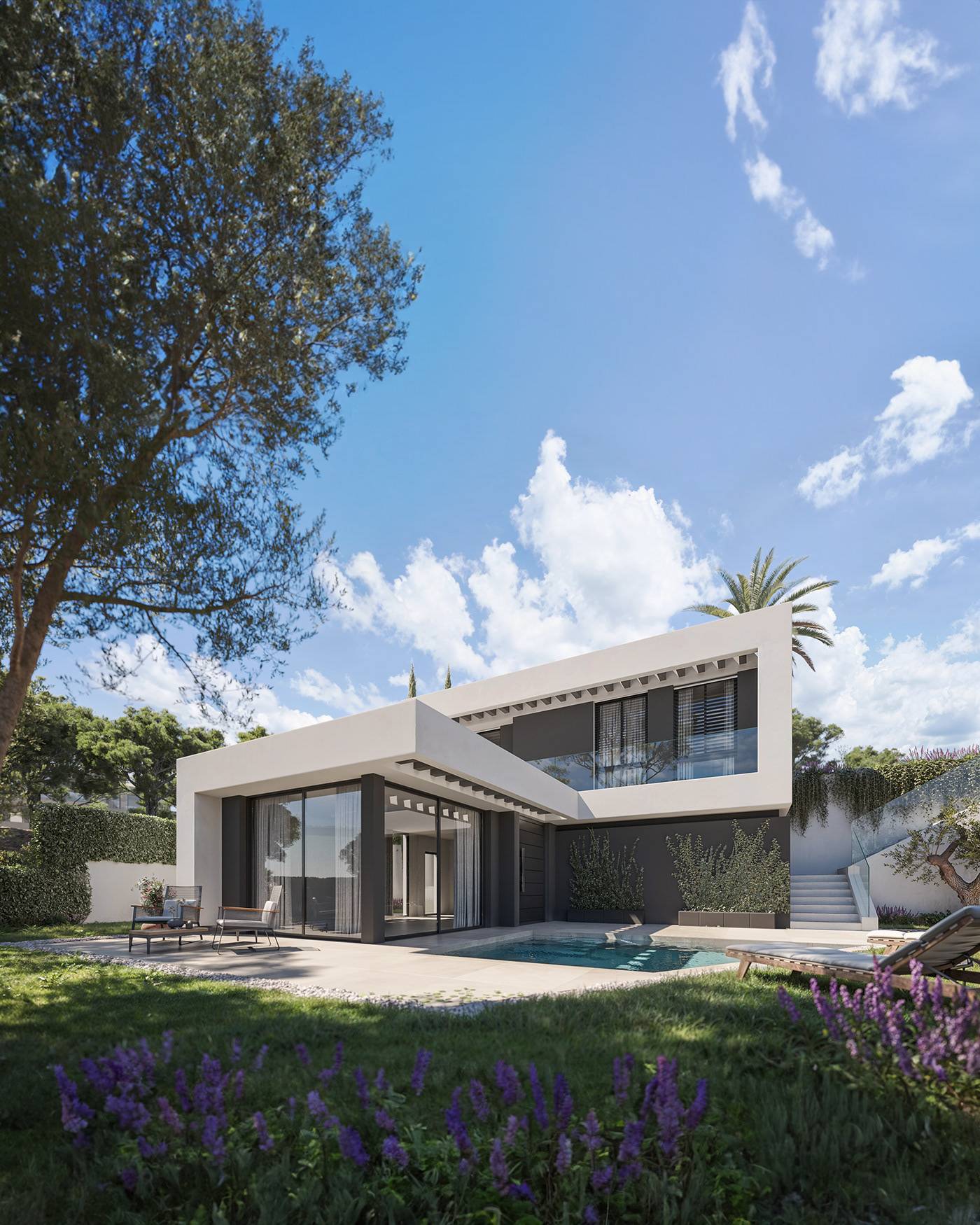
Price of 3D Renders in 2024: A Complete Guide
- Alejandro Postigo
- June 18, 2024
- Uncategorized
- 0 Comments
Read this article: High-Quality 3D Renders for Projects in Marbella

Project Complexity
One of the primary determinants of the cost of 3D architectural visualisation is the complexity of the project. This complexity can be broken down into several aspects:
Project Scale
The scale of the project directly impacts the cost. A render of a small living room with few furnishings and decorative elements will be considerably more affordable than a complete urban development with multiple buildings and green spaces. The amount of architectural detail, furniture, and decorative elements influences the time and effort required to create the render.
Level of Detail
The required level of detail also plays a crucial role. A basic render with simple textures and less emphasis on fine details will cost less than a highly detailed render, where every aspect, from materials to lighting, is accurately represented. For instance, a project that demands meticulous representation of details such as brick texture, furniture finishes, or the arrangement of vegetation in exteriors will incur a higher cost.
Special Elements
Incorporating special elements such as complex structures, exotic materials, or unconventional designs can also increase costs. The need to model organic shapes or unusual structures that do not fit standard modeling parameters adds complexity and thus increases the price.
Realism and Visual Quality
The level of realism and visual quality is another critical factor influencing the prices of 3D renders. Current technology allows for achieving astonishing levels of realism, but this comes with increased work time and computational resources.
Basic Rendering vs. High Fidelity
Basic renders, which provide an overview of the project with less detail and sophistication in lighting and texturing, are more economical. These are suitable for conceptual representations or early stages of design. In contrast, high-fidelity renders, often used for final presentations and marketing, require precise simulation of light, realistic textures, and detailed modeling of each element.
Advanced Techniques
Advanced techniques such as ray tracing for realistic lighting, simulation of atmospheric effects, or inclusion of animations and special effects, increase processing time and cost. Post-production may also involve detailed adjustments in color, shadow correction, and lighting effects, all of which contribute to the final cost.
Type of Render: Still Image, Animation, or Virtual Tour
The type of render requested significantly impacts the cost:
Still Images
Still images are generally the most affordable option. They provide a static view of the project and are useful for presentations, brochures, and marketing documents. While the complexity of the render and the level of detail will affect the cost, still images are typically less expensive than more advanced options.
Animations offer a more dynamic experience, allowing viewers to see the project from different angles and in motion. This can include virtual walkthroughs, aerial views, or day-to-night transitions. Creating animations requires substantial processing power and post-production work, which increases the cost compared to still images.
Virtual tours allow even greater interaction, enabling users to explore the space as if they were physically present. This technology requires the creation of navigable 3D environments and is the most expensive option due to the complexity of the programming and the amount of data needed to ensure a smooth and detailed experience.
Turnaround Times and Urgency
The delivery time is another crucial factor influencing the price of 3D renders. Projects with shorter deadlines often require extra working hours or additional resources, which can significantly increase the cost.
Standard Delivery
A standard delivery timeframe allows the 3D visualisation team to work on the project within a reasonable period, allowing for revisions and adjustments as needed. This option is generally more economical and provides greater flexibility.
Accelerated Delivery
Accelerated delivery requires the team to prioritise the project, which may include working outside normal hours or employing more resources to meet the deadline. This premium service typically incurs additional costs due to the intensified effort required.
Modifications and Revisions
Policies regarding modifications and revisions are crucial when considering the total cost of a 3D render. Revisions allow for adjustments and refinements to meet the client’s needs, but they can impact the overall price.
Included in the Package
Many 3D visualisation services include a limited number of revisions within the original price. This allows clients to make minor adjustments without incurring additional costs.
Additional Revisions
If the number of revisions exceeds what is included in the initial package, additional charges may apply. This is especially relevant for projects with multiple stakeholders or frequent changes in design.
Software and Technology Used
The software and technology employed in creating 3D renders can vary widely in terms of cost and capabilities. The choice of software impacts both the quality of the render and the final price.
Basic Tools
Basic modelling and rendering tools generally come with lower licensing costs and provide sufficient functionality for less complex projects. While adequate for many projects, they may lack some advanced capabilities.
Advanced Software
Advanced software such as Autodesk 3ds Max, V-Ray, or Unreal Engine offers superior capabilities in terms of realism and detail, but these come with higher costs due to licensing fees and the computational power required. These tools enable the creation of high-quality, highly realistic renders but necessitate skilled technicians, potentially increasing costs.
The prices of 3D architectural visualisation in 2024 are influenced by a variety of factors, ranging from the complexity of the project and the required level of detail, to the type of render, delivery timelines, revision policies, and the software used. By understanding these elements, you can make informed decisions and optimise the budget for your architectural visualisation projects.
If you have a project in mind and require our services, don’t hesitate to get in touch. We are here to help bring your ideas to life with the highest quality in 3D visualisation.



